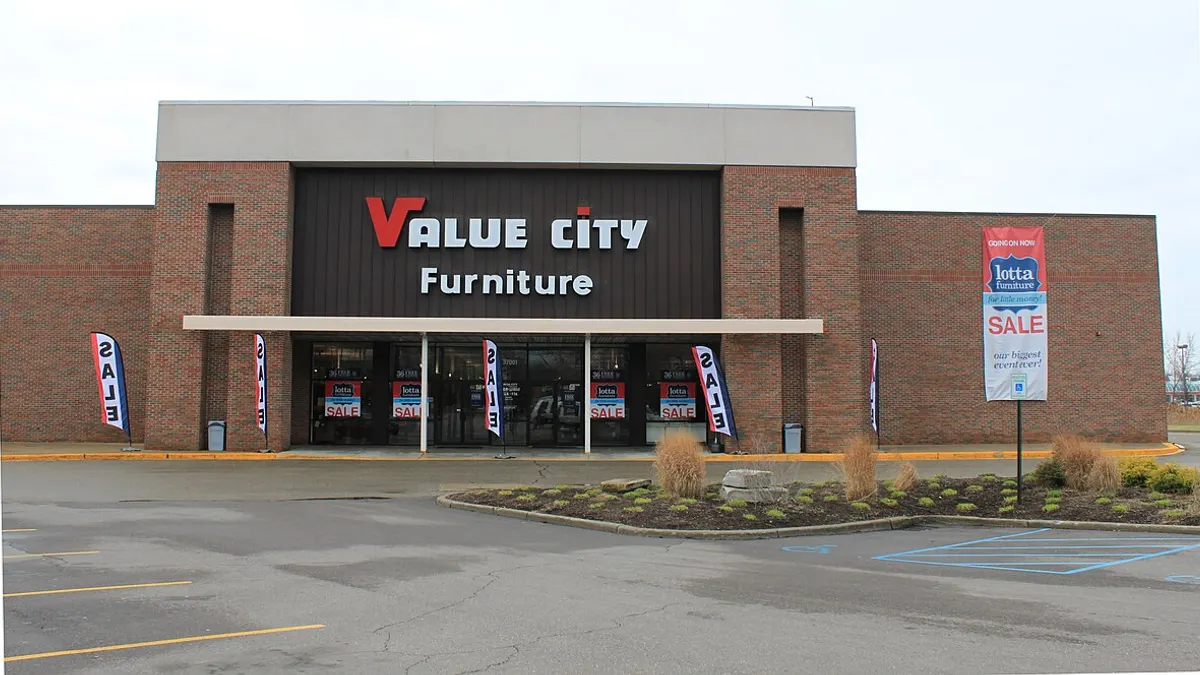In May 1970, the Ohio National Guard shot 67 rounds at unarmed college students protesting the Vietnam War at Kent State University in Ohio. Four students were killed, nine were injured.
The tragedy sent a horrified ripple throughout the country, leading to further protests, student strikes, and a plaintive protest song by Crosby, Stills, Nash and Young. The bloody event remains chiseled into American history.
Yet, 44 years later, none of that seemed to register with any of the people working at Urban Outfitters. On Sept. 12, the apparel retailer advertised for sale on its website a “vintage Kent State sweatshirt” that appeared to have blood stains. Retail price: $129. The garment was in poor taste, to say the least, and reaction condemning it was overwhelming and swift.
“We take great offense to a company using our pain for their publicity and profit," Kent State said in a statement, "This item is beyond poor taste and trivializes a loss of life that still hurts the Kent State community today.” The school went on to invite the company to tour its campus to see the memorial and “gain perspective on what happened … and apply its meaning to the future.”
Urban Outfitters apologized that day and said the shirt, a one-of-kind flea-market find rather than a vintage knock-off, had been sold. It was briefly found on eBay, though it’s not clear whether it was resold or pulled.
Other retailers have committed similar errors of judgment in the past. Just two weeks before the Kent State sweatshirt went on sale, fast-fashion retailer Zara apologized and pulled a children’s shirt that many noticed closely resembled a concentration-camp uniform.
Urban Outfitters itself has been in similar trouble over clothing and accessories that featured or promoted Nazi insignia, under-age drinking, anorexia, and other questionable designs. H&M has also faced similar criticism, the latest over a garment with the Star of David juxtaposed with a death skull.
Why does this happen?
The cluelessness of retailers when it comes to designing, merchandising, and selling items that one Tweeter called "exploring the outer reaches of bad taste” is hard to fathom.
Theoretically, there are several people — beginning when designs are first considered and ending when catalogs and websites are updated — who could raise their hands to question potentially offensive material. Indeed, the web page regarding Urban Outfitters’ “VINTAGE - URBAN RENEWAL,” project, which marketed the Kent State sweatshirt, boasts: “Whether scouring warehouses in LA, or hunting through the world’s most obscure flea markets – our buyers have a knack for scoring the best limited edition deadstock and unique vintage treasures out there.”
But didn’t anyone see what so many others saw — a terribly cynical move to profit off an event that remains a hurtful moment in history?
No, speculates business writer and consultant Erik Sherman, who writes in Inc. magazine that retailers find themselves in this particular vat of hot water because they “lack … integration between marketing and any other division of the company.”
But is it on purpose?
Some marketing experts don’t agree with this explanation because they don’t buy Urban Outfitters’ professions of innocence. They say that retailers stoke controversy because it stokes attention. And that it is, in fact, a winning strategy.
“Their common refrain that ‘it’ was unintentional does not ring true,” Ronald Hill, professor of marketing and business law at Villanova University, told Philadelphia Business Journal reporter Francis Hilario. “Instead, they are pushing the envelope because they know it garners attention of the 24/7 news media as well as social media, resulting in an expansive word-of-mouth.”
Tech and culture writer Helen Popkin is even more blunt, saying, "Urban Outfitters regularly trolls you—and you regularly lose the game.”
“Multiple studies find that anger is the easiest emotion to spread across social media,” she wrote after the Kent State debacle. “You don't think, that after 10 years of this garbage, marketers haven't figured this out? Think about it. Only one 'Vintage Kent State Sweatshirt' was available. But it only took one to get Urban Outfitters trending on Twitter."
Is the concept-to-customer pace too fast?
So cluelessness, poor taste, cynicism, and poor internal checks and balances might all contribute to these kinds of controversies. But speed may also be a factor, says Claire Zillman of Fortune magazine. The pace of fast fashion — Zillman reports that an item by Zara can go from concept to the rack in two weeks — might be precluding any meaningful soul-searching along the way.
Trouble is, that's not much of an excuse.
Then come the apologies
The apologies that come after these ill-fated merchandising events are nearly as cringe-worthy as the original crimes and misdemeanors. When Zara apologized for its Nazi-esque baby shirt, it compounded its problem when it said its offensive garment would be “exterminated.”
And while Urban Outfitters swiftly tweeted out an apology for its Kent State shirt, the following day it released a long, drawn-out explanation that struck some as disingenuous. Whatever its purpose, critics continued to remark that it was at least inadequate.
Even run-of-the-mill pleas that a retailer didn’t mean to cause offense often feel slick and not very sorry. They seem almost designed to stoke further outrage on social media and to provoke the inevitable biting satire posts.
If feeding the controversy really is a tactic, retailers may be playing with fire. Days after the news hit, the sister of one of the slain protestors appealed to Urban Outfitters CEO Richard Hayne, who refused to speak to her. Anyone making an innocent mistake would seem to be open to such an overture; the rebuff is a weak stance in a sensitive moment. Is it possible the retailer got itself in over its head?
Laurel Krause, who was 15 when her then-19-year-old sister Allison was killed, rightly noted that they were then among Urban Outfitters' key demographic. She has endorsed a boycott and has asked that the retailer donate to the Kent State Truth Tribunal, a group that seeks further investigation into what happened that day long ago.
Stop and think
No matter the supposed pay-off, perhaps retailers and their marketing departments should stop and think, or at least catch up on history. An excerpt from the New York Times story filed on the day of the Kent State shootings gives a sense of the sadness and calamity of the event:
“The crackle of the rifle volley cut the suddenly still air. It appeared to go on, as a solid volley, for perhaps a full minute or a little longer. Some of the students dived to the ground, crawling on the grass in terror. Others stood shocked or half crouched, apparently believing the troops were firing into the air. Some of the rifle barrels were pointed upward."
Near the top of the hill at the corner of Taylor Hall, a student crumpled over, spun sideways and fell to the ground, shot in the head."
When the firing stopped, a slim girl, wearing a cowboy shirt and faded jeans, was lying face down on the road at the edge of the parking lot, blood pouring out onto the macadam …"
Would you like to see more retail news like this in your inbox on a daily basis? Subscribe to our Retail Dive email newsletter! You may also want to read Retail Dive's feature about the rivalry between Amazon and Google.






















